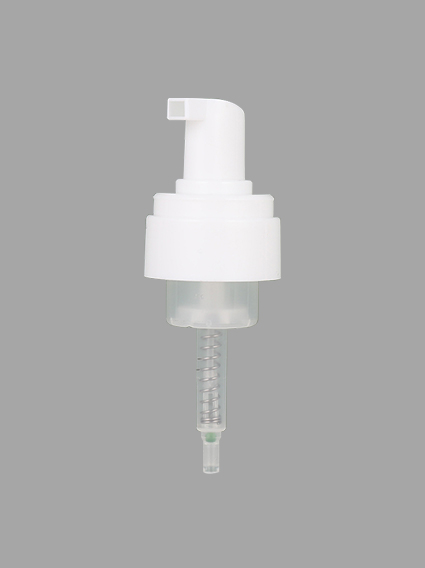A Foam Pump is a type of non-aerosol liquid dispensing device. It outputs the liquid as a foam, and operates by squeezing the pump parts. They are typically made of polypropylene, but are similar to pump devices. In terms of function, the Foam Pump is most useful for spraying non-aerosol solutions. However, foam pump parts may not be used for every application.

Typical applications for the Foam Pump include facial cleansers, make-up removers, and other liquids. Customers love its economical and consistent performance. Some pumps even include instructions for the consumer to perform self-tests to determine which foaming formula best suits their needs. As a result, these pumps are popular in a variety of industries. Just like other pump devices, foam pumps can be designed to fit any brand. In fact, the foaming pump is so popular that it is widely used in personal care and household cleaning, as well as in the automotive and pet industries.
A Foam Pump can also be used to produce a fine, creamy foam to clean your skin and hair. A classic foaming bottle comes in two sizes: a 300-ml bottle and a 500-ml bottle. It has a rounded neck, which means that the flow of liquid will be even. The outer spring mechanism ensures that no metals will get in the way of the foam. The classical Foam Pump can produce 0.8 cc of foam, and can be customised with a higher output.
While traditional soap has replaced bar soaps, foaming pumps are a more sustainable and cost-effective alternative. The foaming pump uses the fluid part of the soap and imbues it with air, causing a foamy lather as it ejected from the dispenser. Its cost-effectiveness is also another plus - it requires less soap than liquid, saving on packaging and transportation. A Foam Pump can be installed in the bathroom, a bathroom, or any other area where soap is used.
A foam pump can also be made of clear PET bottles. These bottles are ideal for bath and body products and hair products. They are compatible with most types of foaming bottles, so you don't need to worry about the compatibility of your product with the bottle. Regardless of your application, there is a Foam Pump out there for you! If you're looking for one, consider one of these three options for foaming bottles.
If you're using a foam pump, be sure to read the manufacturer's instructions carefully. Sometimes, soap gets trapped in the pump's mechanism and prevents the foam from forming. To fix this, rinse the pump with water and remove any residue. If the problem persists, try using a different type of liquid soap or cleaning it in hot water. In the event that your Foam Pump has an issue with cleaning, you can remove the soap from the pump by turning it upside down.
To make foam, the bottle must have enough head space to accommodate the foamer pump. The pump itself takes up a considerable portion of the bottle's volume. For example, a typical 150ml bottle can have a brimful volume of nearly two litres. The bottle is generally produced in any colour, and can be decorated with a screen print or hot stamp logo. The bottles can also be decorated with an imprint to increase the brand recognition of the Foam Pump.
The most common type of Foam Pump used in the cosmetic industry is a hand-held model. The pump is actuated with one or more fingers and dispenses the product onto the fingers of the other hand. Handheld Foamers come in round PET or HDPE bottles and can be ordered with different dispensing heads. Most hand-held Foamers come in two diameters - a larger one is for products with 50ml or more content and a smaller one for products with less than seventy-five-ml. Mini foamers are available, especially for travel markets.
If you use liquid soap, it's important to dilute it properly. Most liquid soap pumps were made for liquids with a consistency of WATER, but thicker liquid soap can stick to the pump, resulting in a thick foam. Thicker liquid soaps are likely to stick to the pump and cause further trouble in the future. Soap pumps for liquids are generally diluted up to three times their original volume, so be sure to read the instruction manual carefully.
